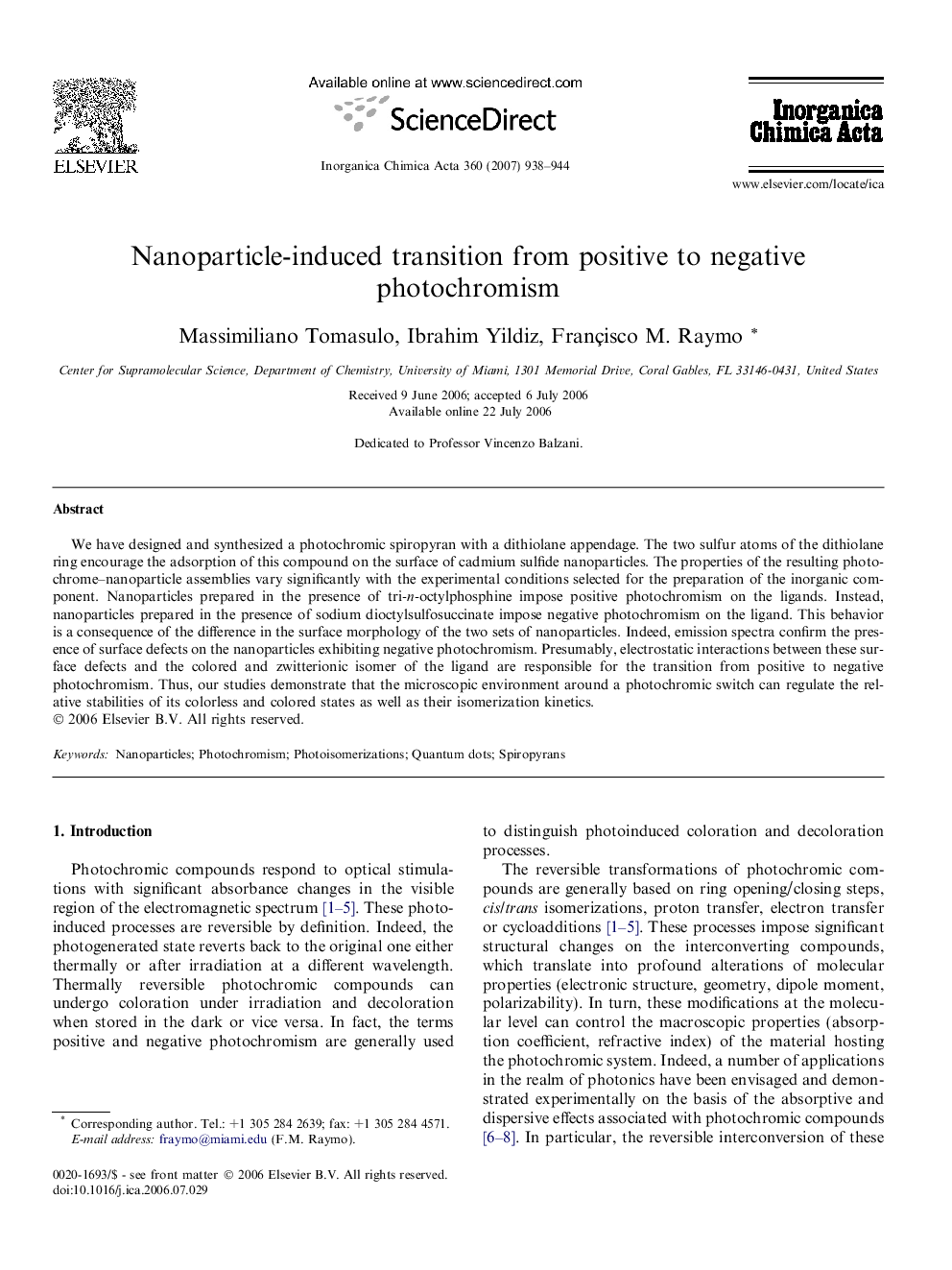| کد مقاله | کد نشریه | سال انتشار | مقاله انگلیسی | نسخه تمام متن |
|---|---|---|---|---|
| 1312771 | 975497 | 2007 | 7 صفحه PDF | دانلود رایگان |

We have designed and synthesized a photochromic spiropyran with a dithiolane appendage. The two sulfur atoms of the dithiolane ring encourage the adsorption of this compound on the surface of cadmium sulfide nanoparticles. The properties of the resulting photochrome–nanoparticle assemblies vary significantly with the experimental conditions selected for the preparation of the inorganic component. Nanoparticles prepared in the presence of tri-n-octylphosphine impose positive photochromism on the ligands. Instead, nanoparticles prepared in the presence of sodium dioctylsulfosuccinate impose negative photochromism on the ligand. This behavior is a consequence of the difference in the surface morphology of the two sets of nanoparticles. Indeed, emission spectra confirm the presence of surface defects on the nanoparticles exhibiting negative photochromism. Presumably, electrostatic interactions between these surface defects and the colored and zwitterionic isomer of the ligand are responsible for the transition from positive to negative photochromism. Thus, our studies demonstrate that the microscopic environment around a photochromic switch can regulate the relative stabilities of its colorless and colored states as well as their isomerization kinetics.
A photochromic spiropyran with a pendant dithiolane ring adsorbs on the surface of CdS nanoparticles. The adsorbed ligand retains its photochromic properties after surface confinement. However, the morphology of the nanoparticle surface regulates the relative stability of the two interconvertible states of the photochromic ligand. In fact, a transition from positive to negative photochromism can be imposed on the ligand by introducing surface defects on the inorganic component.Figure optionsDownload as PowerPoint slide
Journal: Inorganica Chimica Acta - Volume 360, Issue 3, 15 February 2007, Pages 938–944